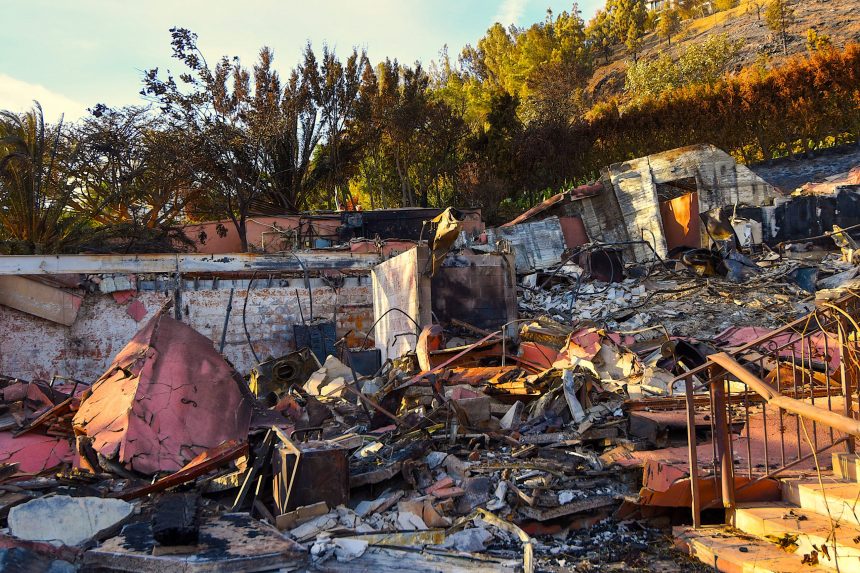Like a good neighbor, State Farm is still there in California. However, homes in Golden State neighborhoods will see higher insurance bills. On May 13, State Farm was given the green light to raise homeowners insurance premiums by 17 percent. Renters and condo insurance were approved for a 15 percent hike, while rental owners policies were approved to increase by 38 percent. Policyholders can expect these new rates to go into effect upon renewals on or after June 1.
The decision follows a three-day hearing in Oakland that took place in early April. State Farm’s request for an emergency interim rate hike was approved by Judge Karl-Fredric Seligman and adopted by Insurance Commissioner Ricardo Lara.
In his decision letter, Judge Seligman called the decision to charge higher insurance rates a “rescue mission to stabilize State Farm’s financial condition while safeguarding policyholders.” Commissioner Lara agreed, saying in a statement, “We are in a statewide insurance crisis affecting millions of Californians. Taking this on requires tough decisions.”
Higher rates come with strings attached for State Farm
To get the rate hike approved, State Farm’s California subsidiary had to agree to receive a $400 million cash infusion from its parent company, State Farm Mutual. Getting funds from its parent company helps spread the burden of paying the astronomical wildfire bill so it doesn’t all fall on California homeowners. State Farm states that, as of May 12, it has already paid out $3.51 billion and is processing more than 12,600 claims related to the Los Angeles wildfires in January.
State Farm repeatedly claimed it was looking down the barrel of a “dire situation,” and that it needed more money to stay afloat. In exchange for getting the interim rates approved, State Farm also agreed to obtain more money from its parent company instead of waiting longer to get higher rates approved. In its initial filings, the insurer requested higher raises: an average of 30 percent for homeowners, 36 percent for renters and condo owners and a steep 52 percent for rental dwellings. The California Department of Insurance and State Farm negotiated those rates down to what was approved on May 13.
Insurance Commissioner Lara stated that he’s focused on “ensuring that State Farm pays its claims to wildfire survivors fully and fairly.” In exchange for getting the emergency rate approved, State Farm also agreed to not issue large-scale nonrenewals through the end of 2025.
Not a done deal: Full hearing will follow interim rate hikes
Although there’s been a ruling, that doesn’t mean the case is closed. State Farm’s rate raises were approved on an emergency, interim basis — meaning they’re not permanent yet. The California Department of Insurance will still hold a full hearing this fall to determine whether the conditionally-approved premiums are excessive. If they are, policyholders charged the heightened interim rates could see a refund from State Farm. State Farm still plans to seek the full initially requested rate hikes, ranging from 30-52 percent total depending on the product line, when the full hearing takes place.
This is out of the norm for how rate increases are usually handled in the state. California is a prior-approval insurance state, meaning rates must be authorized by the state’s Department of Insurance before they can take effect. Usually, this happens in the form of a hearing, where an insurance company must provide enough evidence as to why it needs to charge higher rates. This time, the process worked backwards. The emergency interim rates were approved, and State Farm will justify its reasoning later this year.
While State Farm breathed a temporary sigh of relief — likely a large one, considering its California subsidiary’s financial strength rating was downgraded by S&P from ’AA’ to ’A+’ — not everyone was thrilled with the news. Carmen Balber, executive director of Consumer Watchdog, a consumer advocacy group and frequent intervenor in the California rate-setting process, said the decision “adds insult onto injury for consumers.” “Voter-approved Proposition 103 says a rate hike shouldn’t come before the rate justification, but that’s what happened here,” Balber said in a statement. “State Farm policyholders, many of whom are struggling to get their claims paid by the company after the Los Angeles fires, are now facing double-digit rate hikes.”
Can California homeowners expect further rate increases?
California’s home insurance market has faced tumult over the past few years, leading to significant regulatory changes and uncertainty about the future. Californians are probably wondering what will come next — especially before wildfire season begins in earnest.
“State Farm is a trendsetter,” Amy Bach, executive director of the non-profit United Policyholders, told NBC Bay Area. However, Bach doesn’t think the move will give every insurer carte blanche to raise rates. “Every one of these insurers has to provide their case. If they come in for a rate increase, they’ve got to show they need it. State Farm showed they needed it. If other insurers feel they need it, I’m sure they’ll be coming in [for increases.]”
Rex Frazier, president of the Personal Insurance Federation of California, an insurance industry group, had a similar read on the situation: “We do not expect this process to become commonplace,” says Frazier.
The Department of Insurance has made it clear that this interim process will only be for extraordinary circumstances, not a run-of-the-mill approach.
— Rex Frazier, President, Personal Insurance Federation of California
With extreme weather on the rise, when does the extraordinary become commonplace? Wildfires are burning hotter and wilder in California and other states like Colorado and Texas. Since 1983, the number of wildfires has increased 238 percent nationwide. In the West alone, there are more than 2.6 million homes at moderate or greater wildfire risk, with an estimated reconstruction cost of value north of $1.2 trillion.
Dave Jones, director of the Climate Risk Initiative at the University of California, Berkeley, Center of Law, Energy and the Environment and former California Insurance Commissioner, expects the problem to spread. “We’re going to continue to see substantial rate increases across the country and more acute increases in areas that have been hardest by climate change, like Florida and the West,” he says. “Insurance is the climate crisis canary in the coal mine, and the canary is dying.”
Read the full article here
















